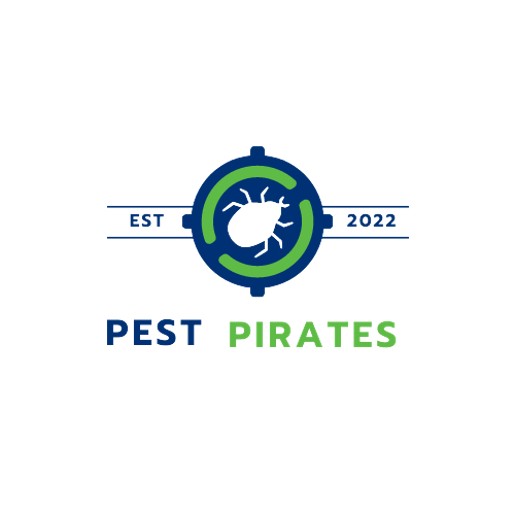
Understanding Termite Damage
When it comes to safeguarding your home, recognizing the structural impact of termites is crucial. These tiny pests can quietly undermine the integrity of your property, causing extensive damage that is costly to repair.
Impact on Structural Integrity
Subterranean termites are the most damaging species in the United States. They infest homes by the thousands, rapidly consuming wood and potentially causing significant damage to the structural integrity of buildings. Since they work from the ground up, they can target multiple support beams simultaneously. While this may slow down the damage in individual pieces of wood, it can lead to higher overall repair costs.
These voracious pests can affect various parts of a home, spreading from lower areas to higher ones, potentially reaching the roof and attic. In severe cases, buildings have collapsed due to the extensive termite damage, which also manifests as sagging floors, dipping ceilings, and the need for replacement of severely damaged wood pieces.
Signs of Termite Infestation
Detecting a termite infestation early is key to preventing extensive damage. Here are some signs that your home may be under attack by termites:
- Hollow-sounding wood: Termites consume wood from the inside out, leaving a thin veneer of timber or paint. When you tap such areas, they may sound hollow or papery due to the damage within.
- Blistering or buckling paint: Similar to water damage, blistering or buckling paint can indicate termite activity.
- Mud tubes: Subterranean termites build mud tubes to provide moisture while they travel between their colony and food source. These pencil-sized tubes are often found near the foundation of a home.
- Frass: Drywood termites expel their droppings, creating small mounds of pellet-like feces known as frass.
- Visible damage: Over time, termite damage can become visible, such as buckling floorboards, loose tiles, and warped or sagging floors.
- Stuck windows or doors: As termites devour the wood framing around doors and windows, these structures can become misshapen and difficult to open or close.
By keeping an eye out for these signs and performing regular termite inspections, you can catch an infestation before it becomes a severe problem. If you suspect termite activity in your home, it’s essential to consult a reliable termite control company to assess the extent of termite damage and determine the most effective treatment options. Remember, the sooner you address the issue, the better you can maintain the structural integrity of your home and avoid costly repairs.
Treatment Options for Termites
When facing the structural impact of termites, it’s crucial to understand the various treatment options available to you. Below are some effective methods to treat termite infestations and protect your home’s integrity.
Liquid Termiticide Treatments
Liquid termiticides are a common and highly effective treatment for termites. These substances are applied around and beneath the foundation of your home to create a chemical barrier that termites cannot penetrate. Some products offer protection for an extended period, ranging from 8 to 12 years. The active ingredients in these treatments, such as fipronil and imidacloprid, are designed to provide long-term control. For more information on various liquid termiticides and their uses, you can explore chemical termite treatments.
Borate Treatments
Borate treatments, which involve the use of disodium octaborate tetrahydrate, are typically applied during the preconstruction phase. This method focuses on treating the lower sections of wooden framing elements that come into direct contact with concrete slabs. Borate effectively prevents termite infestations from taking hold by creating a protective barrier (Mississippi State University Extension Service). Learn more about pre-construction termite prevention at termite-proof your home.
Termite Baiting Stations
Termite baiting stations are an eco-friendly and effective long-term solution for managing termites. These stations are placed around the perimeter of a structure and contain wood impregnated with low doses of slow-acting insecticides. As termites feed on the bait, they carry the poison back to the colony, which eventually leads to its collapse. Proper installation and maintenance are key for the success of baiting stations. Discover which baiting systems might be best for you at best termite baits.
Dry Termiticides
Dry termiticides are particularly useful for targeting small, localized termite infestations. This form of treatment involves the use of a dry bait impregnated with termiticide, which can be directly applied to areas with termite activity. While not as commonly used as liquid termiticides, they can be an effective supplemental treatment option, especially for drywood or subterranean termites found in specific areas. For tackling isolated infestations, refer to drywood termites elimination.
Fumigation
Fumigation is a more intensive treatment method where the entire infested area, such as a piece of furniture or an entire building, is enclosed and filled with sulfuryl fluoride gas. This method is particularly effective against drywood termite infestations and is often used as a last resort due to its complexity and cost. Fumigation requires professional expertise to ensure safety and effectiveness. To understand more about the fumigation process, check out termite fumigation process.
In selecting a treatment method, it’s important to consider the type of termite, the extent of the infestation, and the potential risks to your family and home. Consulting with a reliable termite control company can help you make an informed decision on the best course of action.
Pest Control Strategies
When it comes to safeguarding your home from the structural impact of termites, implementing effective pest control strategies is essential. These methods not only tackle existing infestations but also prevent future termite problems. Here’s a look at some of the effective pest control methods you can consider.
Soil Treatment
Soil treatment is a widely used method for managing subterranean termites. This approach involves creating a protective barrier around your home that serves as an invisible fortress to block and eliminate termites. The treatment disrupts termites’ ability to return to their nests, thus terminating them and preventing future invasions. For more information on how soil treatment can protect your home, check out Pest Defense’s insights.
Wood Treatment
Termites are attracted to wood, so it makes sense to turn their food source into their downfall. Wood treatment involves applying termiticides directly onto vulnerable wood surfaces. This creates a toxic environment for termites, leading to their demise and spreading the treatment to their colonies. As a result, wood treatment can significantly diminish termite populations in and around your home. Learn more about how wood treatment works at Pest Defense.
Bait Systems
Bait systems are a strategic way to tackle termite colonies. These systems involve installing bait stations around the perimeter of your home. The termites are attracted to the bait and then carry the toxic substance back to their colonies, effectively eliminating the entire colony over time. Bait systems are a popular choice for long-term termite management and are used by many pest control professionals. For insights into the effectiveness of bait systems, visit Pest Defense.
The Sentricon System
The Sentricon System is a renowned baiting system that has been effectively eliminating termite colonies since 1997. It’s been used in prestigious locations, including the White House, and continues to be a reliable choice for long-term termite prevention. The system is designed to be environmentally friendly and targets termites specifically, which makes it safe for homes with pets or children. Discover more about the Sentricon System and its success stories at Pest Defense.
Each of these methods can be part of a comprehensive termite management plan. Whether you’re dealing with drywood termites, dampwood termites, or formosan termites, there’s a strategy that can address your specific infestation. Regular termite inspections and staying vigilant for signs of termite infestation are key components in maintaining a termite-free home. If you’re considering do-it-yourself methods, explore organic termite treatment options or homemade termite killer recipes. However, for large or persistent infestations, it’s advisable to consult a reliable termite control company to discuss professional treatment options like chemical termite treatments, termite fumigation process, or heat treatment for termites.




